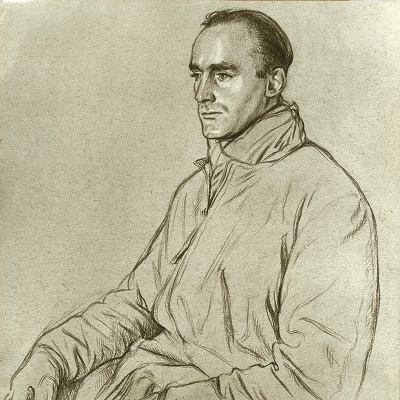
Air Commodore Roderick Chisholm, CBE, DSO, DFC & Bar (23 November 1911–7 December 1994) was a night fighter pilot, flying ace and a highly decorated British airman of the Second World War.
Roderick was born in Nairn, Scotland. He was educated at Ampleforth College in Yorkshire from the age of six, after his father had died, and later at the Imperial College of Science and Technology, where he gained a BSc in Chemistry.
In 1932 he joined the Anglo Persian Oil Company (BP) as a research chemist. He transferred to Iran in 1935 where he worked first as a chemist at the Abadan Refinery, and later as a technical services manager in Tehran before he returned to the UK at the outbreak of war. Whilst in Iran he played polo.
After the war, following a short return to Iran, he became the personnel manager of the Kuwait Oil Company in London. In 1955 he was appointed general manager of Iranian Oil Services and later its chairman. He retired in 1970. Outside work he helped Hungarian refugees after the 1956 uprising, and looked after the finances of a youth club in Poplar, London.
In retirement, first in London and then from 1978 in Alresford, Hampshire he was the honorary treasurer of the Georgian Group, a trustee of the Leach Trust, and a guide at Winchester Cathedral. He also pursued his penchant for making fine furniture and decoration out of the most unpromising materials.
Between 1930 and 1935 he served with 604 Squadron of the Royal Auxiliary Air Force where he was commissioned and gained his wings.
During his time in Persia, from 1935 to the outbreak of war, he flew during leave with the RAF in neighbouring Iraq.
He rejoined 604 Squadron, now a night fighter unit based at Middle Wallop, Hampshire in June 1940 after re-training. The squadron was one of the first to use and develop airborne radar to find aircraft at night. Flying Beaufighters, he shot down seven enemy planes, for which he was awarded two DFCs.
In March 1942 he was assigned to do staff work at 81 Group, which undertook night fighter training. Later, in July, he was made CO of the Fighter Interception Unit at Ford, Sussex. This unit was charged with improving the effectiveness of airborne interception radar.
In November 1943 Roderick joined Bomber Command to become second in command, with the rank of Air Commodore, of the newly formed 100 Group that was to develop Radio Counter Measures and night fighter support for bombers. During his time with 100 Group he managed to fly on operational missions. He shot down two more enemy aircraft and was awarded the DSO. At the end of the war he was awarded the CBE.
Cover of Darkness is an account of his involvement in wartime night fighter operations and the development of airborne radar. It was first published in 1953.
In 1945 Roderick married Sanchia Whitworth, a WAAF officer. They had a son, Julian, and two daughters, Jane and Rose.
Cover of Darkness: The Memoir of a World War Two Night-Fighter
A pilot’s captivating autobiography that traces the development of night-flying from the early days of the Battle of Britain to the final triumph over Germany.
More info →


